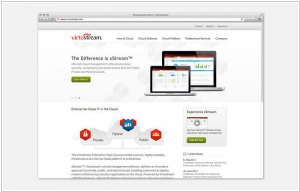Microsoft Azure vs Virtustream
August 19, 2023 | Author: Michael Stromann
21
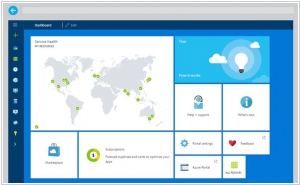
Microsoft Azure is an open and flexible cloud platform that enables you to quickly build, deploy and manage applications across a global network of Microsoft-managed datacenters. You can build applications using any alternative language, tool or framework. And you can integrate your public cloud applications with your existing IT environment.
Microsoft Azure and Virtustream are both cloud computing platforms, but they have distinct differences in their offerings and target markets. Microsoft Azure is a comprehensive cloud services platform provided by Microsoft, offering a wide range of infrastructure, platform, and software services. It caters to businesses of all sizes and industries, providing scalability, flexibility, and a global presence. Azure focuses on enabling organizations to build, deploy, and manage applications and services with a wide array of tools and services.
Virtustream, on the other hand, is a cloud services provider that specializes in delivering enterprise-class cloud solutions for mission-critical applications and workloads. It offers a secure, compliant, and high-performance cloud infrastructure designed for businesses with demanding requirements, such as large-scale data processing, high availability, and strict regulatory compliance. Virtustream differentiates itself by providing specialized managed services and deep expertise in running complex enterprise workloads in the cloud.
See also: Top 10 Public Cloud Platforms
Virtustream, on the other hand, is a cloud services provider that specializes in delivering enterprise-class cloud solutions for mission-critical applications and workloads. It offers a secure, compliant, and high-performance cloud infrastructure designed for businesses with demanding requirements, such as large-scale data processing, high availability, and strict regulatory compliance. Virtustream differentiates itself by providing specialized managed services and deep expertise in running complex enterprise workloads in the cloud.
See also: Top 10 Public Cloud Platforms
Microsoft Azure vs Virtustream in our news:
2023. ChatGPT comes to Microsoft Azure
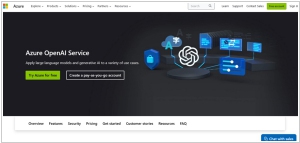
Microsoft has officially announced the general availability of ChatGPT, which can now be accessed through the Azure OpenAI Service. This service, tailored for enterprises, offers a fully managed platform with additional governance and compliance features to ensure businesses can leverage OpenAI's technologies effectively. ChatGPT now joins a lineup of other OpenAI-developed systems already provided via the Azure OpenAI Service, including the text-generating GPT-3.5, code-generating Codex, and image-generating DALL-E 2. Microsoft maintains a strong collaborative partnership with OpenAI, marked by substantial investments and an exclusive agreement to commercialize OpenAI's AI research.
2021. Microsoft launches Azure Container Apps, a new serverless container service
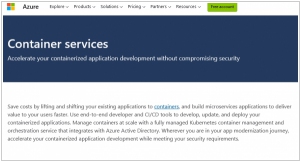
Microsoft has announced the preview launch of Azure Container Apps, a new serverless container service that is fully managed and complements their existing container infrastructure services such as Azure Kubernetes Service (AKS). Azure Container Apps is designed for microservices and offers rapid scaling based on HTTP traffic, events, or long-running background jobs. It shares similarities with AWS App Runner, one of Amazon's serverless container services focused on microservices. Google also provides container-centric services, including Cloud Run, which is their serverless platform for running container-based applications.
2019. Microsoft launched cloud APIs for form and handwriting recognition
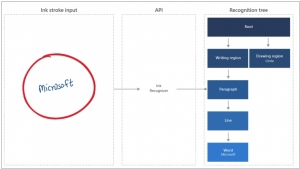
Microsoft has unveiled a range of new cognitive services on its Azure Machine Learning cloud platform, catering to various document-related needs and offering enhanced capabilities. Among these services are the Ink Recognizer and Form Recognizer, which enable the conversion of handwritten text and paper documents into digital text and data. Additionally, the Conversation Transcription service facilitates the transformation of phone dialogues into text, with the ability to identify the author of each phrase. Another notable addition is the Personalizer service, which delivers personalized recommendations to website and online store visitors based on their behavioral patterns. Furthermore, Microsoft has introduced a user-friendly visual interface for creating machine learning models, empowering marketers and other professionals to engage with machine learning. By simply uploading the database and specifying the desired predictive parameter, users can explore the potential of machine learning in their respective fields.
2019. Microsoft launched own Windows Virtual Desktop service
Microsoft has recognized the potential of offering virtual desktop services independently, despite its prior reliance on cloud partners. The introduction of the Windows Virtual Desktop service, now accessible for companies on the Microsoft Azure cloud platform, allows the installation of Windows, Office, and other software licenses on the cloud instead of employees' individual computers. Consequently, employees can access and work with their software through a virtual desktop. This approach offers several advantages. Firstly, it enables even older Windows 7 computers to operate efficiently while providing the benefits of Windows 10. Secondly, it offers convenience to administrators in terms of creating and maintaining new work environments while ensuring security measures. The Windows Virtual Desktop service itself is free, with costs incurred only for additional Azure resources consumed, such as memory and CPU time.
2018. Microsoft Azure gets new high-performance storage options
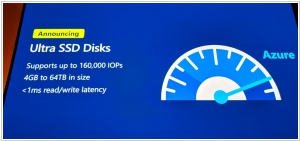
Microsoft is introducing a range of new storage options for Microsoft Azure, with a particular focus on scenarios that require high disk performance. One notable addition is the public preview of Azure Ultra SSD Managed Disks. These drives are designed to deliver extremely low latency, making them well-suited for workloads that demand quick response times. Additionally, Standard SSD Managed Disks have transitioned from preview to general availability within just three months. Moreover, Azure now offers expanded storage capacities of 8, 16, and 32 TB across all storage tiers, including Premium and Standard SSD, as well as Standard HDD. Another new addition is Azure Premium Files, which is currently in the preview stage. This service is also SSD-based and aims to provide improved throughput and reduced latency for SMB operations within Azure Files, a familiar cloud storage solution that uses the standard SMB protocol.
2017. Microsoft launched new archival storage option for Azure
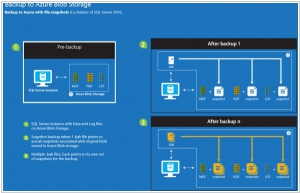
Microsoft has recently unveiled a new storage option, known as Azure Archive Blob Storage, for its cloud computing platform Azure. This addition offers developers a more cost-effective solution for storing large volumes of archival data, including logs, raw camera footage, audio recordings, transcripts, medical documents, and images. The key distinction between the "cool" and "archive" tiers lies in the pricing structure and accessibility of the data. While archival storage comes at a lower cost, the retrieval expenses are higher. Additionally, data stored in the archive tier is not readily available for immediate access. The stored blobs undergo a process of "rehydration," which can take up to 15 hours for blobs holding less than 50GB of data. It is worth noting that Amazon Glacier and Google Near, which provide similar cold storage services, have been established options for several years.
2017. Microsoft launches new tools to help enterprises move to its Azure cloud
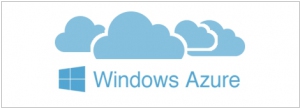
According to Microsoft, a significant majority (80 percent) of the companies it engages with express a desire to adopt a hybrid cloud approach. In response to this demand and to facilitate their transition to the company's cloud platform, Azure, Microsoft is introducing a range of new tools. One of the key offerings is the Cloud Migration Assessment service, which enables companies to assess their current IT infrastructure and receive an estimate of the costs associated with migrating their services to Azure, along with potential savings. Moreover, Azure users now have the opportunity to receive a discount when they transfer their Windows Server licenses (with Software Assurance) to Azure. Known as the Azure Hybrid Use Benefit, this benefit can lead to savings of up to 40 percent, making it more enticing for existing Windows Server users to shift their workloads to the cloud. Additionally, for those interested in making this transition, the Azure Site Recovery (ASR) tool is receiving a minor update. While primarily designed to assist enterprises in coordinating their disaster recovery plans, it can also be leveraged for migrating existing virtual machines to Azure.
2015. EMC acquired IaaS platform Virtustream
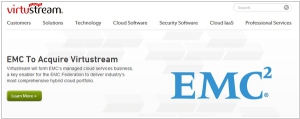
EMC has acquired Virtustream, a cloud management firm, for a staggering $1.2 billion. The company has expressed its intention to integrate Virtustream as its newly established cloud managed services business. This acquisition of Virtustream marks a significant stride in the right direction, as it provides EMC with a managed services business focused on the cloud. This is particularly crucial in addressing a major concern for large enterprise customers, who grapple with the complexities of migrating and overseeing software like SAP in the cloud. Such organizations encounter difficulties when attempting to transfer these extensive applications to the cloud, and this is where a company like Virtustream can play a pivotal role in facilitating the process. The successful integration of Virtustream into the company's existing framework would make this acquisition highly advantageous. However, the challenge lies in the amalgamation of companies and cultures that typically accompanies any acquisition, and the intricate details need to be carefully managed.
2014. Following SAP and Oracle, IBM jumps to Microsoft Azure
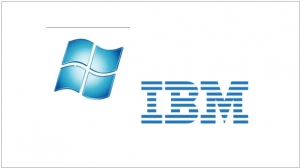
Microsoft has formed partnerships with SAP and Oracle for its cloud-computing platform, and now IBM has joined as the newest partner in Microsoft's enterprise software layer. As part of the agreement, IBM middleware, including WebSphere Liberty, MQ, and DB2, will be accessible on Microsoft Azure, while IBM Cloud will offer Windows Server and SQL Server. Additionally, Microsoft's .NET runtime will be made available on IBM's Bluemix cloud development platform. With these collaborations, Microsoft can proudly claim to have the Big Four integrated into its enterprise-focused cloud platform.
2014. Microsoft Azure appliance makes comeback
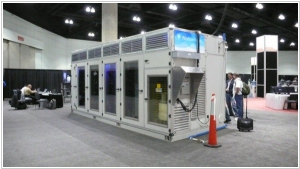
Microsoft is introducing a fresh Azure appliance that enables companies or service providers to implement it within their own data centers. Dubbed the Cloud Platform System, this novel appliance will operate using identical Azure APIs, services, hypervisor, and all other components as the Azure public cloud, while effortlessly establishing connections with the Azure public cloud. Notably, Microsoft's past exploration of Azure appliances adds to the appeal of this appliance. Previously, the company had contemplated selling appliances to select large service provider partners, like HP, and had even launched a program to assist web hosts in launching their own versions of Azure. However, both initiatives seemed to have been abandoned due to various business and technological factors. Nevertheless, the appliance has made a resurgence.

